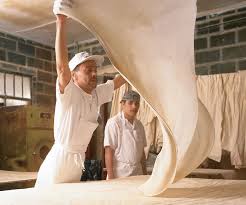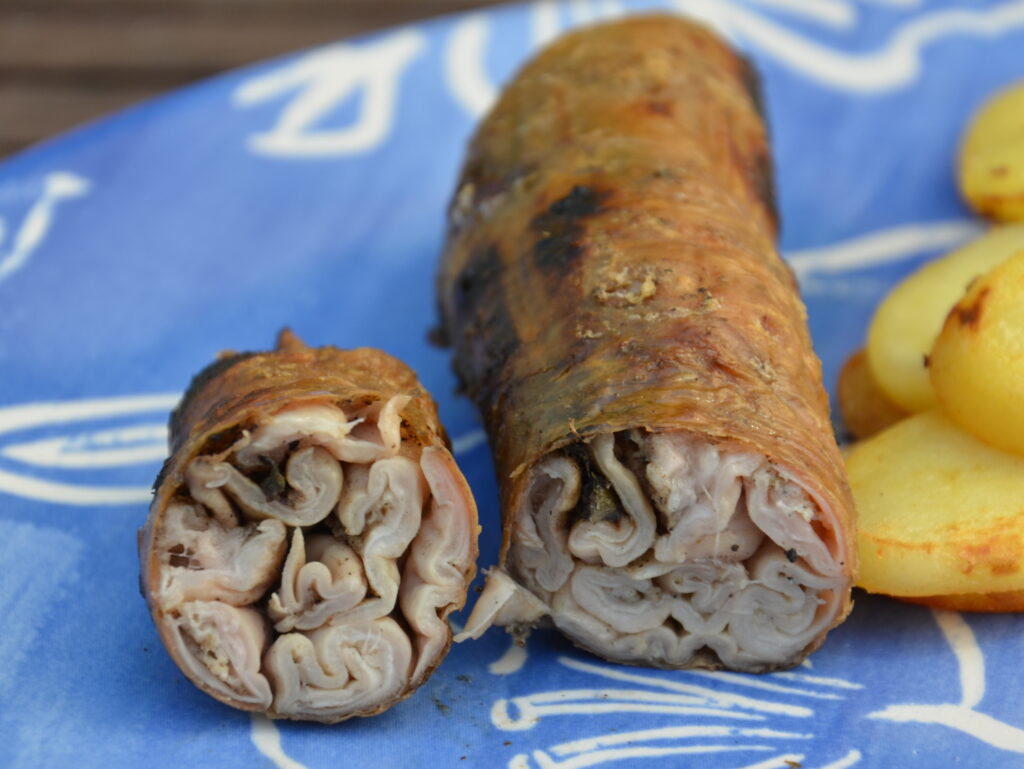There are certain activities in which a person might, for a variety of reasons, engage one time but in which that person never engages again. This could involve thrill-seeking, such as with skydiving, bungee-jumping or ghost peppers. Or it could involve honest or absent-minded attempts at fun that turn out to arouse extreme distaste.
Here is a list of activities that I did once but hope never to do again.
STICK MY FINGER IN A WALL SOCKET
When I was five or six, my brother, who was 13 or 14, and his friend Ricky Moreno told me to stick my finger in an electrical outlet. “It feels neat,” they said. I did as instructed, and soon learned that the sensation a five- or six-year-old experiences when inserting his finger in a place where there is abundant electrical traffic is anything but “neat.”
 I don’t know if Ricky Moreno corrupted my brother or vice versa, or if they came to their friendship already evil, but they were also together when they urged me to lick the business end of a nine-volt battery, and again when they insisted I take a big bite of “this pretty red carrot.”
I don’t know if Ricky Moreno corrupted my brother or vice versa, or if they came to their friendship already evil, but they were also together when they urged me to lick the business end of a nine-volt battery, and again when they insisted I take a big bite of “this pretty red carrot.”
“Have you ever seen a red carrot, Clay? Isn’t it interesting?” It turned out not to be a carrot at all; it was an extraordinarily hot pepper, and not the kind of thing a five- or six-year-old finds the least bit interesting.
SNORKEL WITHOUT SUNSCREEN
My mother took me to the Yucatán in the summer of 1977. After several days in Mérida, from which we visited ruins and where we ate multiple foods cooked in banana leaves and where Mama drank daiquiris, we had a very early flight to Cozumel, where we were to visit more ruins and frolic in the Caribbean.
The water around Cozumel—that which lapped ashore near the El Presidente Hotel, anyway—sparkled its sapphire sparkle and beckoned. By nine-o’clock I was in the water, having rented a mask and snorkel from the hotel. Mama remained ashore ostensibly to guard our belongings, but I suspect she was more interested in the availability of daiquiris on the beach versus their inaccessibility to those frolicking in the sea.
When a veneer of sea water glistens across a snorkeler’s back, especially when the snorkeler’s attention is fixed on the colorful creatures beneath the surface, the impending physical alterations to the snorkeler’s skin under the tropical sun rays are far from mind. “Oooh, a barracuda!” I thought as I explored the undersea world near the El Presidente Hotel, oblivious to what was happening beneath the cool veneer on my back.
I returned to land only to eat lunch, not because I was hungry but because of the opportunity to order from Room Service and have the food delivered right to the beach. I considered Room Service to be the height of fanciness, and only occasionally in our travels did my parents allow it. I had Room Service once at the Holidome in Kearney, Nebraska, and at several Howard Johnsons.
(Alas, by the time, decades later, when the circumstances of my employment not only allowed but required five or ten room-service meals per week, the thrill had gone.)
After lunch I was tired and took a nap, our six a.m. flight having required me to wake up in the wee hours. This nap occurred on the beach at the El Presidente Hotel, with me facing down and the sun high in the sky. Being asleep, I was unaware of Mama’s whereabouts during my nap, which lasted until about four in the afternoon. She might have repaired to our hotel room for a nap of her own, or possibly to the Bar Carib in the lobby. In any case, when I woke up I was alone on the beach.
Reunited soon thereafter, however, we considered dinner options. But as the afternoon waned and became dusk, I became quite uninterested in eating. In fact a chill overcame me.
“Can we turn off the air conditioning?” I asked. “I’m freezing.”
“I’m hot,” Mama replied. Mama was often hot.
“Well, I’m freezing,” I said through chattering teeth. My body convulsed.
“You’re sunburned,” Mama observed. She offered to apply lotion to my back and I let her, my crimson skin slurping the unguent in great quantities. I sat up briefly, thinking I might dress to go out to eat, but every movement ignited burning pain on my dorsal half. The convulsions continued, aggravating the whiplike spikes of agony across my back.
“I don’t feel very good.”
“OK, you stay here and I’ll be back in a little bit.” I do not remember if Mama went out in search of a nighttime pharmacy or to the Bar Carib, but I remained in the hotel room, on my stomach, for the rest of the evening.
I remained horizontal all of the next day, too; my appetite returned the day after that. I managed the excursion to the ruins at Tulum, and an outdoor lunch during which I burned many calories chewing rubbery conch.
Almost 45 years after my stay at the El Presidente Hotel in Cozumel, I recall it vividly whenever I manage, through the manipulation of the hinged mirror on my medicine cabinet and another mirror on the opposite wall, to catch a glimpse of my upper back. I see the many large freckles there—my souvenirs of Mexico—and remind myself that I do not wish ever again to snorkel without sunscreen.
SPEND THE NIGHT ON A BENCH OUTSIDE A CANADIAN BUS STATION
I have already related this story in these pages, but it is worth reaffirming that passing a night on a Canadian bus-station bench is not something I ever wish to do again.
MAKE PHYLLO
Phyllo dough, in all its flaky glory, is available in the freezer section of every supermarket worth its salt and pepper. Frozen phyllo is inexpensive and easy to work with, and the quality is excellent, so it makes little sense to exert oneself manipulating a fist-size clod of flour and water into something resembling a twin-size bed sheet.
You roll and flail and roll and flail, stretching the dough thinner and thinner to the point where you could read a newspaper legal notice through it, dusting with flour throughout the process. Your kitchen, as well as parts of your living and dining rooms and your cats, dogs and children, will have taken on a powdery white coating.
ANDOUILLETTE
There is a sausage in France called andouillette. It is especially popular in the Burgundy region, where it is often served with a pungent mustard sauce. Its name resembles that of andouille, the spicy smoked pork sausage that is a fixture in Cajun cooking, but except for the concept of sausage as a mammal intestine holding meat within, andouillette bears little similarity to Cajun andouille. (Andouille also appears in Brittany and Normandy, but I refer here only to the Louisiana version.) Andouillette is such a delicacy among the people who adore it that some of them in France created something of a fan club, the Association Amicale des Amateurs d’Andouillette Authentique, or ‘Friendly Club of Lovers of Authentic Andouillette.’ All over France, you’ll see the “AAAAA” designation on restaurant menus and butcher windows.
Sausage exists in infinite varieties. The meat within can be almost any part of any animal, and the casings that contain it can be the small or large intestines of sheep, hogs or cows. A slim breakfast link? Think of the small intestine of a sheep. Bologna? That would be the large intestine of a cow. Go ahead…think of mammal intestines.
The thing about andouillette is that what’s inside isn’t ground meat. No, what’s stuffed inside the intestines is more intestines. And no matter how much you might soak or scrub mammal intestines, they never lose the memory of their original purpose. This is why many descriptions of the aroma and flavor of cooked andouillette contain the word “fecal.” This also is why andouillette is often served with the pungent mustard sauce.
On our first visit to the city of Dijon, which is the largest city in Burgundy, Calvin and I ate dinner in a restaurant whose name I, uncharacteristically, forget just now. It was a lively place on a lively night on a lively street—Rue Monge, I think—but the exact locale is less important here than what happened inside.
A beef option on the menu was bavette, a flavorful cut from the sirloin. You don’t see it much on American menus, and I enjoy eating flavorful beef, so bavette is what I ordered. When the cheerful young server arrived with our food and placed my plate before me, she said something that ended in “ette.” As I mentioned, it was a lively restaurant on a lively night, and the din was strong. But I assumed she was announcing the arrival of my bavette. I assumed it but I was wrong.
I cut into the mustard-sauced mound on my plate and immediately detected an aroma that was anything but beef-like. I deduced that, amid the festive din, the cheerful young server had heard “andouillette” when I ordered “bavette.”
In the spirit of adventure it had been my eventual plan to try andouillette, but given its noted fecal characteristics I hoped for more of a ramp-up period in which I could prepare mentally for the experience. Circumstances, however, had other ideas.
I gamely ate half of what was on my plate, grateful for the pungent mustard sauce. The experience brought to mind the times when, as a child in Texas, I had been forced to consume lima beans. I despised lima beans, and to swallow a forkful meant squeezing my nostrils tightly while convulsing as the grotesque legumes made their way down. I managed the andouillette without the nose-pinching or convulsing.
When the server came to remove our plates, she was mortified when I explained what I believed had happened. But given the general sense of festivity, I told her not to worry about it.
I am now glad to have tried andouillette, but once was enough. If pressed, though, I’d still rather have andouillette than lima beans.
DUCK TONGUES
My friend Joyce is of Chinese descent, and she once took us to a restaurant in Chicago’s Chinatown that was owned by an uncle, I think, or some other relative. We were not offered menus; rather, the owner brought us his most special dishes on account of Joyce’s presence.
I recall that everything was good, but I can’t say these decades later what we ate, except for one dish. Near the end of the feast, a plate appeared on our table on which was a mound of sauced objects that, at first glance, resembled slender bits of beef or pork. But beef or pork it was not.
“Ooh! Duck tongues!” Joyce exclaimed. “Have you had duck tongues?”
“Uh, no. I think I would remember that,” I replied.
Calvin and Joyce and I dug in, Joyce with somewhat more zeal. Nothing about the flavor of the dish was unappealing; it tasted to the uneducated palate simply like good Chinese food.
But two other characteristics required some masticatory and mental effort.
First was the density of these esophageal appendages; they were very chewy. They were more chewy than my mother’s Swiss steak, and that’s saying something. Duck tongues are a bit bigger than things I care to swallow without chewing, such as antihistamine tablets, and so chew we did. We chewed and chewed and chewed, and barely made a dent in the pile of duck tongues before us, which resembled in size and shape a deflated volleyball. I was terrified of insulting Joyce’s uncle (or other relative) by not finishing the food he’d prepared, but there’s really only so much a person can do.
More troubling than the chewiness of duck tongues is what they feel like in your mouth. Has a cat ever licked you? If so, you know about the sandpapery quality, what with the little bristly bumps over the topside of the tongue. It turns out duck tongues are the same as cat tongues that way, and as we chewed our way through the plate of them, we felt the sandpaper rub against all corners of our mouths.
I love my friend Joyce, but if she ever again invites us to a relative’s restaurant, I will claim to have developed a middle-age allergy to duck tongues. I might presume to hope she acquires some French relatives who run restaurants, but with my luck they’d serve me andouillette.
McRIB
While attending the University of Michigan in the fall of 1982, I accompanied some classmates on what was known in the collegiate vernacular as a road trip to buy beer. I don’t remember why beer wasn’t available in Washtenaw County, but whatever the reason, a carful of us headed to Detroit to buy some, and while there we stopped at a McDonald’s for sustenance. The McRib was still something new back then—I looked it up just now and discovered that it launched in 1981—and I thought what the heck.
The McRib was the beginning of the end of what had theretofore been my cavalier attitude toward sandwiches. Except for preferring my crusts to be removed, before Detroit I was not particular about what went between the bread. Peanut butter and jelly, Underwood Deviled Ham, Oscar Mayer Cotto Salami, Oscar Mayer Braunschweiger Liver, Oscar Mayer Bologna—I was game for most anything as long as it didn’t have tomatoes on it. (I just this minute learned that Oscar Mayer produces 19 varieties of bologna, and my head is about to explode.)
I remember the Detroit McRib’s bun being more bite-resistant than other McDonald’s buns, and this was not a good thing. I like a soft bun, with sufficient oomph only to survive the moistness of whatever sauce is applied to it for as long as I am eating the hamburger.
As for the meat in a McRib, I’ll be a sport and go along with McDonald’s assertion that it is made of pork. But I can’t help but wonder if this is where all the pig snouts and rectums go after the slaughterhouse. (You haven’t seen those pictures of large boxes of pig rectums? You’ve missed out.)
I don’t remember anything about the sauce on my McRib, which says more about the McRib than my memory. In any case, unless the McRib has improved in the last 39 years, I don’t plan to eat another one. But I don’t know how to be sure unless someone I trust eats one and gives me a report.
FEEL UP A GIRL
I didn’t do this but I once tried halfheartedly, and that’s enough said on the subject.
IN SUMMATION
There might very well be other things that belong on this list but which are too vile to persist in my conscious. If that’s the case, I’m not going to work myself up trying to remember them.




